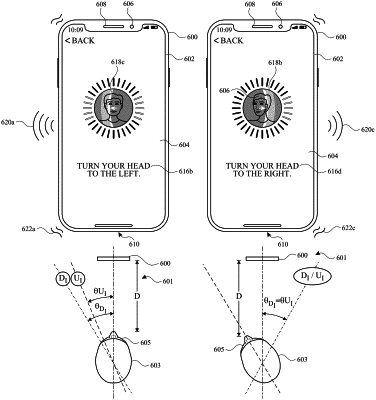| CPC G06F 3/167 (2013.01) [G06F 3/16 (2013.01); G06V 40/16 (2022.01); G06V 40/166 (2022.01); G06V 40/172 (2022.01); G06V 40/67 (2022.01); G06V 10/143 (2022.01); G06V 40/50 (2022.01)] | 21 Claims |

|
1. An electronic device, comprising:
one or more biometric sensors;
one or more processors; and
memory storing one or more programs configured to be executed by the one or more processors, the one or more programs including instructions for:
while detecting that a biometric feature is in a first orientation, relative to the one or more biometric sensors, producing first audio that indicates that an orientation of the biometric feature should be changed;
after producing the first audio:
detecting a change in the orientation of the biometric feature relative to the one or more biometric sensors from the first orientation to a second orientation; and
comparing a current orientation of the biometric feature to a target orientation of the biometric feature, wherein the target orientation of the biometric feature corresponds to the second orientation of the biometric feature;
while the biometric feature is in the second orientation:
capturing first depth information corresponding to the biometric feature from the one or more biometric sensors; and
in response to detecting that the biometric feature has reached the second orientation based on the comparison, producing second audio that indicates that the orientation of the biometric feature should be changed;
after producing the second audio, detecting a change in the orientation of the biometric feature relative to the one or more biometric sensors from the second orientation to a third orientation;
while the biometric feature is in the third orientation, capturing second depth information corresponding to the biometric feature from the one or more biometric sensors; and
after capturing the first depth information and the second depth information, enrolling a user with the device using the first depth information and the second depth information.
|